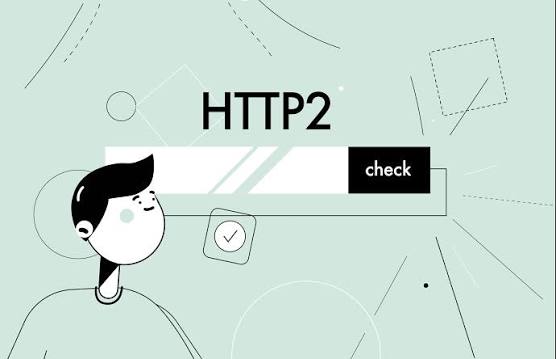
HTTP/2 Checker
Created on 17 September, 2025 • Checker tools • 95 views • 3 minutes read
A Complete Guide to Testing HTTP/2 Support
HTTP/2 Checker: Understanding Modern Website Performance
What Is an HTTP/2 Checker?
An HTTP/2 Checker is a tool that allows you to determine whether a website supports the HTTP/2 protocol. HTTP/2 is the latest version of the HTTP protocol, designed to improve website performance, reduce loading times, and provide a more secure browsing experience.
When you run an HTTP/2 check, the tool verifies if a website is using HTTP/2 and displays important details such as:
- Protocol version (HTTP/1.1 or HTTP/2)
- TLS/SSL support
- Server type and response headers
Understanding HTTP/2 support is critical for developers, SEO specialists, and website owners who want faster, more reliable sites.
Why HTTP/2 Matters
HTTP/2 brings significant improvements over the older HTTP/1.1 protocol. Here’s why it matters:
1. Faster Page Loading
HTTP/2 uses multiplexing, allowing multiple requests to be sent simultaneously over a single connection. This reduces page load times compared to HTTP/1.1, where requests were sent sequentially.
2. Improved Security
Most HTTP/2 implementations require HTTPS, ensuring encrypted communication between the server and users. This enhances security and protects sensitive data.
3. Better User Experience
Faster websites reduce bounce rates and keep users engaged. HTTP/2’s efficiency ensures smoother browsing on both desktops and mobile devices.
4. SEO Advantages
Google considers website speed as a ranking factor. Websites supporting HTTP/2 often load faster, indirectly improving search engine rankings.
5. Resource Optimization
HTTP/2 reduces overhead by compressing headers and allowing servers to push content proactively to the browser, which optimizes resource usage.
How Does an HTTP/2 Checker Work?
When you perform an HTTP/2 check, the tool communicates with the website server and inspects the connection protocol. It looks for:
- Protocol Version: Confirms if the server responds with HTTP/2 or older versions.
- TLS/SSL Configuration: Checks whether the connection is secure with HTTPS.
- Server Response Headers: Displays headers that may indicate server type, compression, and caching methods.
The result provides insights into whether your website is optimized for modern browsers and users.
Practical Use Cases for HTTP/2 Checking
1. Website Performance Optimization
Developers check HTTP/2 support to ensure websites leverage multiplexing, header compression, and server push for faster loading.
2. SEO Analysis
SEO professionals use HTTP/2 checkers to verify if sites are updated with modern protocols, as speed directly affects search engine ranking.
3. Security Verification
Since HTTP/2 requires HTTPS in most cases, an HTTP/2 check also helps confirm proper TLS/SSL implementation.
4. Competitor Analysis
Marketers and developers can analyze competitors’ websites to see if they are using HTTP/2 and plan optimization strategies accordingly.
5. Server and Hosting Evaluation
Before migrating websites or selecting a hosting provider, checking HTTP/2 support ensures faster and more secure hosting environments.
Benefits of HTTP/2
BenefitDescriptionMultiplexingSends multiple requests over a single connection, reducing latency.Header CompressionReduces data overhead for faster communication.Server PushAllows servers to send resources proactively, improving load times.Enforced HTTPSEncourages secure connections by default.Reduced LatencyMinimizes delays, improving user experience.
By supporting HTTP/2, websites can significantly enhance speed, security, and efficiency.
How to Use an HTTP/2 Checker
Performing an HTTP/2 check is simple:
1. Online Tools
Free websites like tools.keycdn.com/http2-test, https://www.giftofspeed.com/http2-test/, or https://tools.pingdom.com/ allow quick checks by entering a URL.
2. Browser Developer Tools
Modern browsers display HTTP version information in the Network tab of developer tools (F12 → Network → Protocol).
3. Command Line
Tech-savvy users can check HTTP/2 support using tools like curl or openssl to inspect protocol negotiation and TLS versions.
4. Hosting Dashboard
Some hosting providers include HTTP/2 status in their control panels for easy verification.
Limitations of HTTP/2
While HTTP/2 improves performance, there are some considerations:
- Legacy Browser Support: Older browsers may not fully support HTTP/2.
- Server Configuration Required: Some servers need specific configuration to enable HTTP/2.
- HTTPS Dependency: Most implementations require SSL certificates.
- Mixed Content Issues: HTTP/2 works best when all resources are served via HTTPS.
Despite these limitations, the benefits far outweigh the challenges for modern websites.
Future of HTTP/2 and HTTP/3
As web technology evolves, HTTP/3 is emerging as the next step in faster, more secure web communication. Using QUIC protocol, HTTP/3 further reduces latency, enhances security, and improves performance for mobile users and global audiences.
Checking for HTTP/2 support now ensures your website is future-ready and compatible with upcoming technologies.
Conclusion
An HTTP/2 Checker is an essential tool for anyone managing websites, improving SEO, or optimizing web performance. It allows you to verify whether your site is taking advantage of modern protocols for faster loading, secure connections, and better user experiences.
Whether you manage a business website, personal blog, or portfolio site like ProfileLinks.xyz, regular HTTP/2 checks help ensure your site stays fast, secure, and competitive in 2025 and beyond.
Popular posts
-
Random number generatorGenerator tools • 133 views
-
Emojis removerText tools • 129 views
-
Lorem Ipsum generatorGenerator tools • 129 views
-
Reverse lettersText tools • 121 views
-
Old English text generatorText tools • 121 views